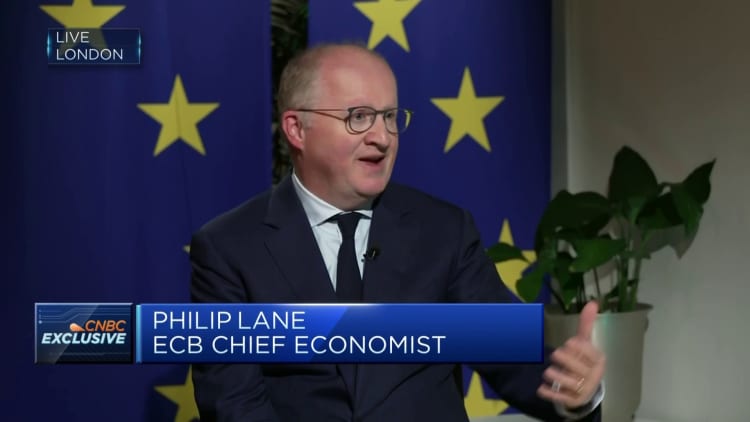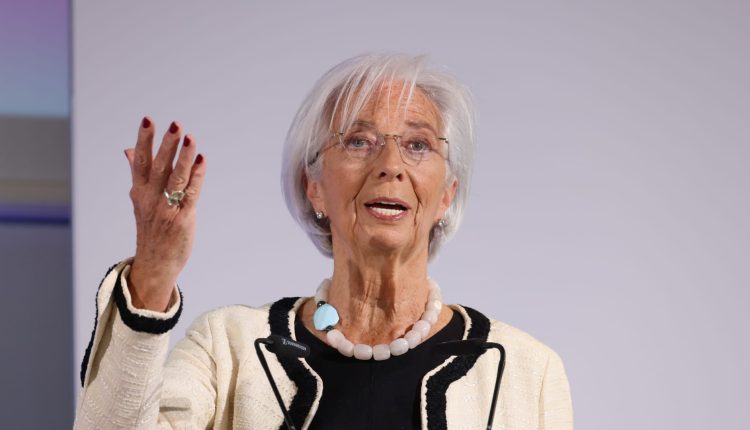Christine Lagarde, president of the European Central Bank, at the ECB And Its Watchers conference in Frankfurt, Germany, on March 20, 2024.
Bloomberg | Bloomberg | Getty Images
European Central Bank chief Christine Lagarde on Wednesday reiterated that June is the month in which policymakers will consider bringing interest rates lower.
“By June we will have a new set of projections that will confirm whether the inflation path we foresaw in our March forecast remains valid,” Lagarde said in a speech in Frankfurt.
Her message overall was highly positive on the path on inflation, despite flagging geopolitical uncertainty and ongoing domestic price pressures. Euro zone inflation cooled to 2.6% in February, though the print for services remained stickier at 3.9%.
“Unlike in the earlier phases of our policy cycle, there are reasons to believe that the expected disinflationary path will continue,” Lagarde said, stressing confidence in the latest set of staff macroeconomic projections, which see inflation averaging 2.3% in 2024, 2% in 2025, and 1.9% in 2026.
The euro zone’s central bank has held rates steady since bringing them to a record high in September. Until its March meeting, the bank’s messaging was that it was too early to discuss when to start rate cuts. It next meets in April, then June.
Lagarde said Wednesday that it would judge its three criteria — the inflation outlook, the dynamics of underlying inflation and the strength of monetary transmission — to gain “sufficient confidence to begin the dialling-back phase in which we make policy less restrictive.”

June has been flagged as a key month by numerous members of the ECB’s Governing Council, which votes on the path of rates. In a phrase repeated by Lagarde on Wednesday, ECB Chief Economist Philip Lane told CNBC last week that the central bank would “learn a lot by April, [and] a lot more by June.”
Earlier this month, Dutch central bank head Klaas Knot told a media briefing that he had “pencilled in June for a first rate cut,” according to Reuters.
The June meeting is considered a potential turning point, as it will be the first gathering for which data from spring wage negotiations will be available. The ECB is on alert for potential knock-on inflationary effects from rising salaries.
Market attention is now moving to how many rate cuts the ECB is likely to carry out over the course of this year.
Money markets indicate three cuts taking place by December, along with a potential fourth, according to Reuters data.


